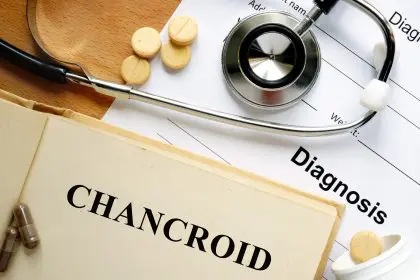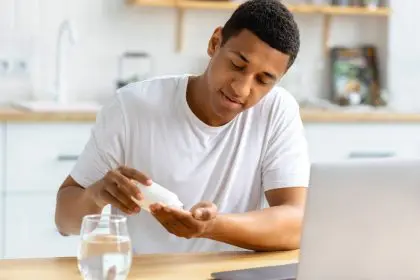Menopause represents a significant life transition, yet the intimate physical changes it brings remain surprisingly underdiscussed. While hot flashes and mood swings receive considerable attention, the profound transformations occurring in vaginal and vulvar tissues often remain private struggles for many women. These changes—driven primarily by declining estrogen levels—can significantly impact physical comfort, sexual satisfaction, and overall quality of life. Understanding these normal but challenging shifts provides the foundation for effectively addressing them and maintaining intimate wellness throughout this natural life transition.
The cellular impact of estrogen withdrawal
The most fundamental menopausal change occurs at the cellular level, where declining estrogen dramatically alters vaginal tissue structure and function. During reproductive years, estrogen stimulates vaginal epithelium to produce glycogen, maintain thickness, and support healthy blood flow. As estrogen levels fall during menopause, these cells become progressively thinner, less elastic, and produce significantly less natural lubrication.
This cellular transformation happens gradually over months or years, often beginning during perimenopause—the transitional years before menopause officially occurs. The once-thick, rippled vaginal lining becomes smoother and paler, with a diminished blood supply that reduces natural moisture production. These cellular changes explain the most common symptoms women report: vaginal dryness, discomfort, and increased susceptibility to minor injuries during activity or intimacy.
What many women don’t realize is that these changes affect the entire urogenital region, not just the vaginal canal. The tissue of the vulva, urethra, and bladder trigone all contain estrogen receptors and undergo similar transformations. This widespread impact explains why symptoms often extend beyond the vagina to include urinary issues and external discomfort.
The disappearing labia phenomenon
One of the most visually apparent yet rarely discussed menopausal changes involves the labia minora—the inner vaginal lips. During perimenopause and continuing through postmenopausal years, these tissues often undergo significant atrophy, sometimes to the point of becoming nearly undetectable. This labial atrophy occurs as subcutaneous fat decreases and collagen fibers break down without estrogen’s supportive effects.
In some women, the labia minora may shrink dramatically or even fuse to the labia majora in a condition called labial adhesion. This fusion can create discomfort during movement and potentially lead to hygiene challenges as normal anatomy changes. The outer labia (labia majora) also typically lose volume and fullness as fat deposits diminish and skin elasticity decreases, creating a flatter appearance to the entire vulvar area.
These changes often progress so gradually that many women don’t notice them until they’re quite pronounced. Some report feeling that their external genitalia look noticeably different when they eventually examine themselves. Though these changes don’t necessarily cause physical symptoms directly, they can affect body image and comfort during various activities, including sex.
The shrinking effect on clitoral anatomy
The clitoris undergoes several significant menopausal transformations that directly impact sexual sensation and response. With declining estrogen, the clitoral glans (the external visible portion) and hood may decrease in size, while connective tissues become less elastic. More concerning for many women is the development of clitoral phimosis—a tightening of the clitoral hood that can partially or completely cover the glans, making it difficult to expose during arousal.
This condition can significantly alter sexual sensation, as the clitoral glans contains thousands of nerve endings central to female sexual pleasure. When the hood adheres more tightly to the glans, direct stimulation becomes more difficult, often requiring greater intensity or different techniques to achieve the same level of sensation experienced previously.
Additionally, the internal structures of the clitoris (the crura and bulbs extending within the body) receive less blood flow during arousal due to vascular changes, potentially resulting in less engorgement during sexual response. These anatomical shifts explain why many women report needing more direct and prolonged stimulation to achieve satisfaction after menopause—a change that requires adaptation and sometimes communication with partners.
The vaginal microbiome disruption
The healthy vaginal environment maintains a delicate bacterial balance dominated by Lactobacillus species that produce lactic acid, maintaining an acidic pH that protects against infection. Estrogen plays a critical role in supporting this ecosystem by stimulating glycogen production, which feeds beneficial bacteria. As estrogen declines during menopause, this entire system undergoes profound disruption.
The postmenopausal vagina typically shifts to a less acidic pH (becoming more alkaline), creating conditions where protective Lactobacillus species struggle to thrive. This alteration allows potential pathogens to proliferate more easily, explaining the increased susceptibility to vaginal infections many women experience after menopause. The changing microbial community can also produce different odors that women may notice—a natural result of this ecosystem shift rather than a hygiene issue.
This microbiome disruption extends beyond simple infection risk to impact overall vaginal health. The metabolic byproducts of a healthy microbiome support tissue integrity and moisture, while an altered microbiome may produce compounds that further irritate sensitive tissues. This creates a potential cycle where microbiome changes worsen tissue health, which further disrupts the microbiome—a cycle that effective interventions aim to break.
The vulnerable urethral tissue
The urethra—the tube carrying urine from the bladder—contains some of the body’s highest concentration of estrogen receptors, making it particularly vulnerable to menopausal changes. As these tissues thin and become less elastic, many women experience urethral symptoms including burning, irritation, and increased urinary urgency even with an empty bladder.
The urethral opening may appear more prominent as surrounding tissues thin, sometimes leading to a condition called urethral caruncle, where the tissue becomes red and exposed. This exposure can create sensitivity during activities, wiping, or intimate contact. The urethral sphincter muscles may also lose some strength and coordination, contributing to stress incontinence or the sensation of needing to urinate frequently.
Perhaps most significantly, the trigone area where the urethra connects to the bladder undergoes similar changes, creating altered sensations of bladder fullness. Many women report feeling they need to urinate more frequently despite producing smaller volumes, a condition called urinary frequency that can significantly impact daily activities and sleep patterns. These urethral symptoms form a key component of Genitourinary Syndrome of Menopause (GSM), affecting an estimated 50-75% of postmenopausal women.
The altered sexual response cycle
Beyond specific tissue changes, menopause often transforms the entire sexual response pattern in ways many women find surprising. The sexual arousal phase typically lengthens significantly, with physical responses like vaginal lubrication and engorgement taking notably longer to develop. These changes result from both reduced blood flow to genital tissues and alterations in nervous system response.
Many women notice reduced sensitivity requiring more intense or prolonged stimulation to achieve the same level of arousal experienced previously. Orgasms may feel different—sometimes described as less intense or shorter in duration—due to changes in pelvic floor muscle tone and vascular response patterns. Some women also experience uncomfortable contractions during orgasm if vaginal tissues have become particularly thin or inelastic.
The resolution phase (after sexual activity) often involves quicker return to baseline states, with tissues that felt comfortable during arousal potentially becoming uncomfortable more rapidly afterward. This compressed resolution phase can create post-intimacy discomfort that wasn’t experienced during earlier life stages. Understanding these natural changes helps women and their partners adapt expectations and approaches rather than interpreting them as dysfunction or disinterest.
The heightened sensation and hypersensitivity
While many menopausal changes involve reduced sensitivity, some women experience the opposite effect—heightened sensation that crosses into uncomfortable hypersensitivity. This seemingly contradictory response occurs because thinner tissues with less protective coating expose more nerve endings to direct stimulation, creating intense reactions to touches or pressures that were previously comfortable.
This hypersensitivity can manifest as sharp pain, burning, or intense discomfort with even gentle contact. Activities like wiping after urination, wearing certain clothing fabrics, or sitting for extended periods may trigger discomfort. During intimacy, areas that once provided pleasure may become uncomfortably sensitive, requiring significant adjustments to previously enjoyable activities.
The vulvar vestibule—the area surrounding the vaginal opening—proves particularly vulnerable to this hypersensitivity as its specialized tissue undergoes some of the most dramatic menopausal changes. This area contains numerous nerve endings and glands that become more exposed as surrounding tissues thin, creating a potential focal point for discomfort that many women identify specifically during medical evaluations.
7 effective approaches for each symptom
- Implement strategic moisture replacement to address tissue dryness through multiple complementary methods. Long-acting vaginal moisturizers applied every 2-3 days maintain baseline tissue hydration, while personal lubricants provide additional comfort during intimate activities. Look for products specifically formulated for sensitive postmenopausal tissues, avoiding ingredients like glycerin and propylene glycol that may cause irritation. For optimal results, establish a regular moisturizing routine rather than waiting until discomfort develops, as prevention proves more effective than treating established dryness.
- Support the vaginal microbiome through targeted interventions that help restore healthier bacterial balance. Vaginal probiotics specifically formulated with Lactobacillus species can help reestablish beneficial bacteria, while avoiding unnecessary antibiotics preserves existing flora. Minimize disruption by using gentle, fragrance-free cleansing products only on external tissues, and avoid douching entirely as it removes protective bacteria. Some women benefit from periodic pH-balancing treatments that help maintain the slightly acidic environment beneficial bacteria prefer.
- Strengthen and relax pelvic floor muscles through proper therapeutic exercises, as these muscles play crucial roles in both comfort and function. Rather than simple Kegel contractions alone, work with a pelvic floor physical therapist to develop a comprehensive program addressing both strength and flexibility. Many women develop excessively tight pelvic muscles that require relaxation techniques rather than additional strengthening. Internal vaginal dilators used progressively help maintain tissue flexibility and comfortable function when used consistently as directed by healthcare providers.
- Consider appropriate low-dose estrogen therapy for localized symptom relief when non-hormonal approaches prove insufficient. Unlike systemic hormone therapy, vaginal estrogen products work primarily on local tissues with minimal systemic absorption. Options include low-dose creams, tablets, or a vaginal ring, each with different application schedules and absorption profiles. These products effectively address multiple symptoms simultaneously by improving tissue thickness, elasticity, lubrication, and supporting healthier bacterial balance. Always discuss individual health history with healthcare providers to determine appropriate options.
- Adapt intimate activities to accommodate physical changes through open communication and willingness to explore new approaches. Extended foreplay allows more time for arousal and natural lubrication development, while experimenting with different positions minimizes pressure on sensitive areas. Consider expanding the definition of intimacy beyond traditional patterns to include activities creating connection without discomfort. Regularly scheduled intimate time prevents extended inactive periods that can worsen tissue health through reduced blood flow.
- Establish a vulvar care routine protecting these sensitive tissues from further irritation through appropriate hygiene and product choices. Use only water or extremely gentle cleansers on vulvar tissues, thoroughly rinsing and patting dry rather than rubbing. Choose cotton underwear and avoid tight-fitting clothing that creates friction and moisture retention. Consider periodic cool compresses for comfort if experiencing sensitivity, and avoid potential irritants like fragrant products, harsh soaps, or flavored lubricants that may exacerbate symptoms.
- Support overall tissue health through lifestyle factors that improve circulation and cellular nutrition to genital tissues. Regular physical activity—particularly exercises like walking, swimming, or cycling—increases blood flow to the pelvic region, bringing oxygen and nutrients that support tissue health. Adequate hydration improves all tissue function including mucous membranes. Nutritional approaches emphasizing omega-3 fatty acids, antioxidants, and vitamin E support cellular health and reduce inflammation that may contribute to tissue deterioration.
Talking with healthcare providers effectively
Discussing vaginal and vulvar changes requires finding healthcare providers knowledgeable about menopausal health who create comfortable environments for these conversations. Prepare for appointments by tracking specific symptoms, noting when they occur, what makes them better or worse, and how they impact daily life. This specific information helps providers determine appropriate evaluation and treatment approaches.
During appointments, use accurate anatomical terms when possible to ensure clarity, and consider bringing written questions to ensure all concerns are addressed. If vaginal examinations are uncomfortable, request smaller speculums designed for postmenopausal anatomy and additional lubricant during the procedure. Remember that effective treatment often requires follow-up and adjustment over time, so establishing ongoing communication with providers leads to better outcomes.
For optimal care, consider healthcare providers who specialize in menopausal medicine or women’s health, as their focused expertise often translates to more comprehensive treatment approaches. Some women benefit from multidisciplinary care teams including gynecologists, pelvic floor physical therapists, and sexual health specialists who collaborate to address complex symptoms affecting multiple systems.
Menopause represents a significant transition requiring both understanding and proactive management of the physical changes it brings. By recognizing these common but underdiscussed vaginal and vulvar transformations, women can better advocate for appropriate care and implement effective strategies to maintain comfort and function. With proper support and intervention, most women can navigate these changes successfully while maintaining intimate wellness throughout their postmenopausal years.















